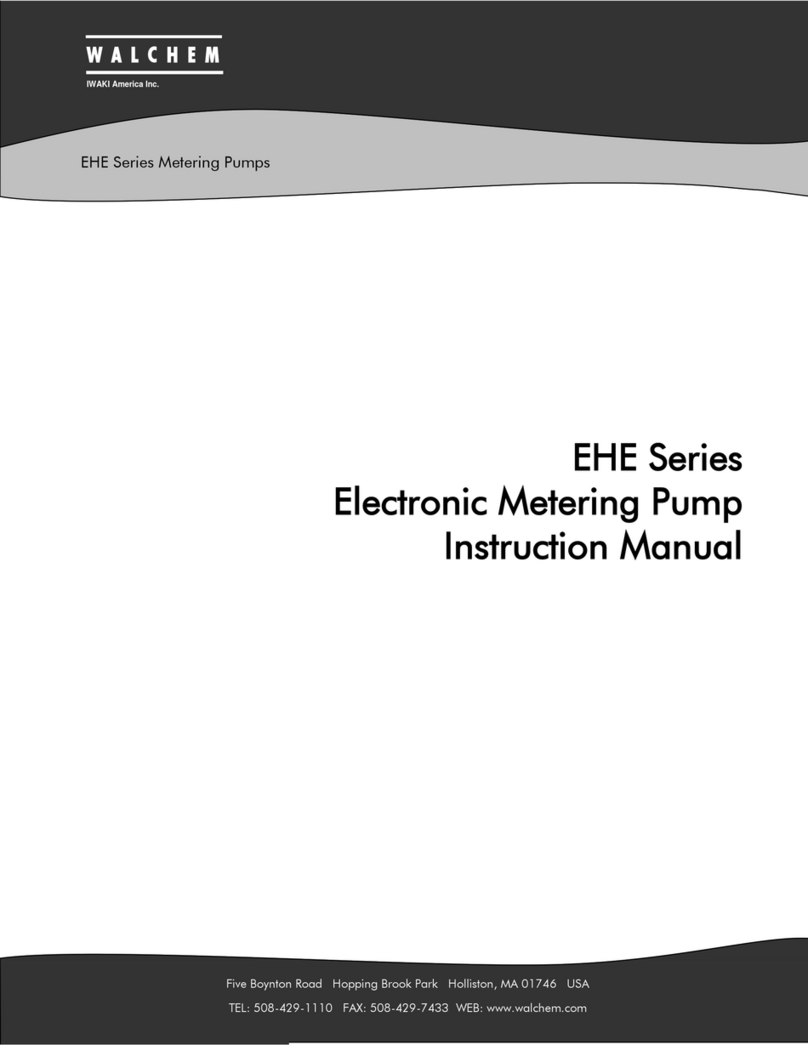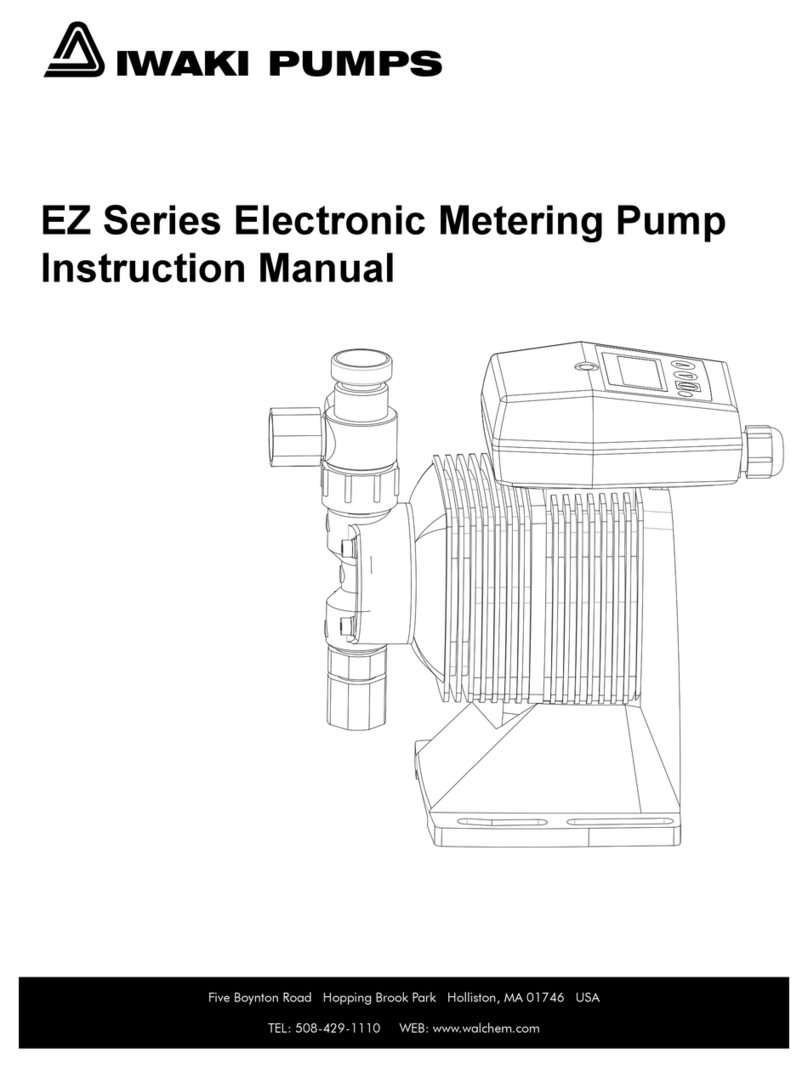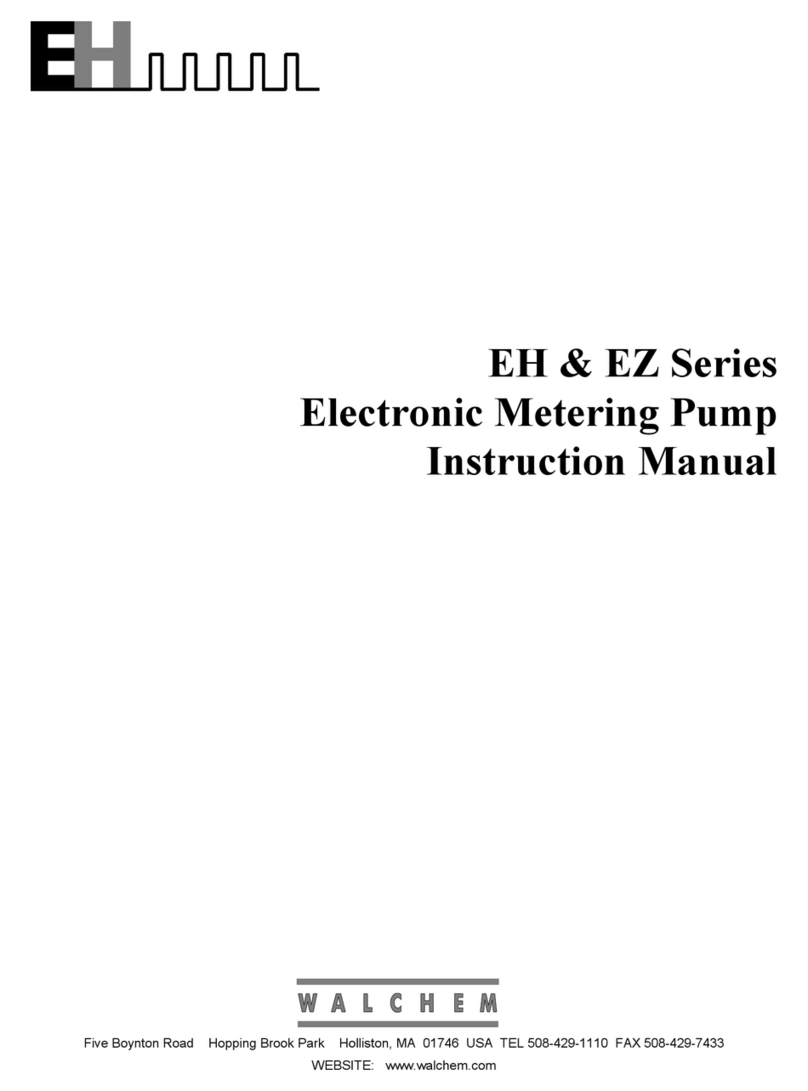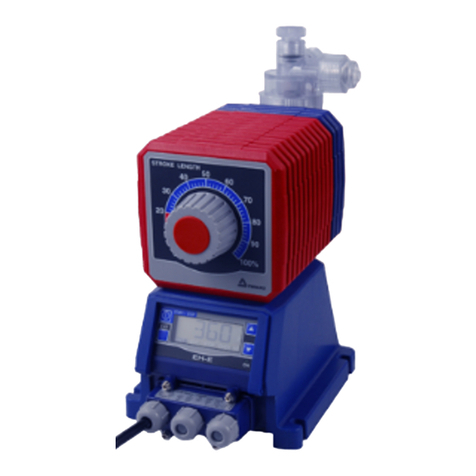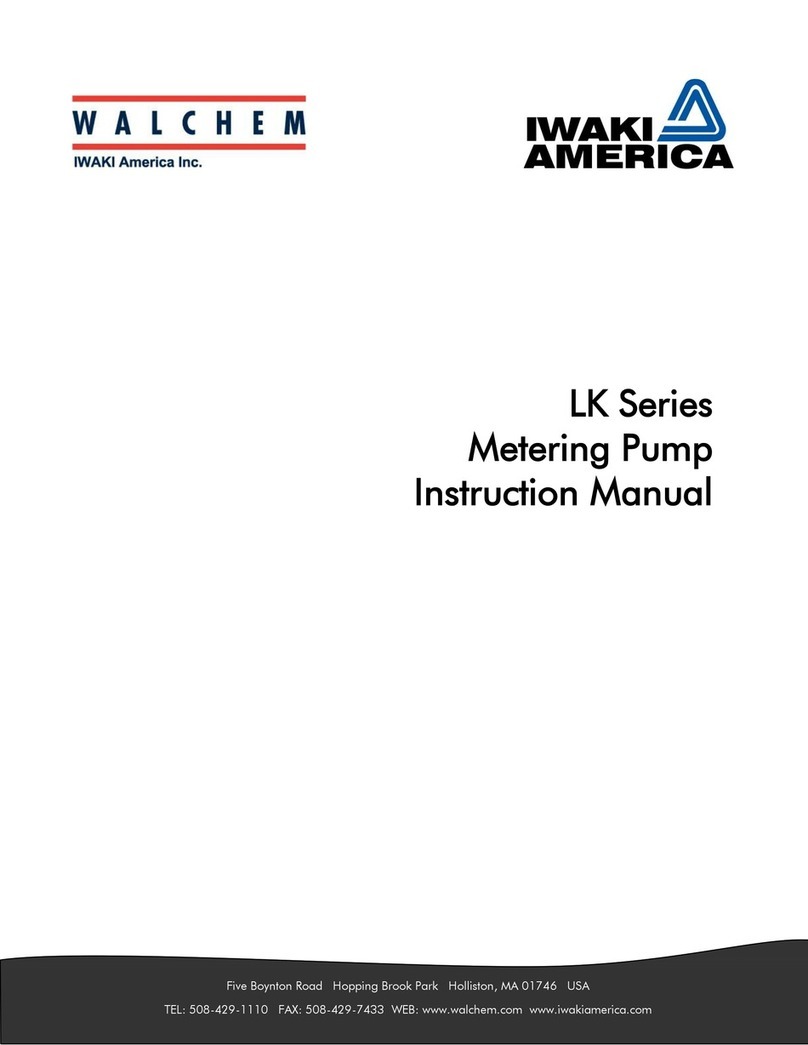
1.0 INTRODUCTION
1.1 Safety and Caution Notes
Always wear protective clothing, eye protection and gloves before working on or near a
metering pump. Follow all recommendations of the supplier of the solution being pumped.
Refer to the MSDS from the solution supplier for additional precautions.
Walchem E-Class metering pumps should be installed where ambient temperatures do not
exceed 122°F (50°C) or do not fall below 32°F (0°C). Pumps should always be shielded from
direct exposure to the elements. Black UV resistant tubing should be used if the tubing is
exposed to strong UV radiation (sunlight/lamps). The EK Series is specifically designed to
withstand the elements and can be mounted directly outdoors within the temperature
specfications. To protect and maintain the IP rating of the pump, the clear covers that protect
the electronic controls MUST be left in a secured/tightened condition at all times other than
during adjustment of the pump.
WARNING Risk of electrical shock! This pump is supplied with a grounding conductor
and grounding-type attachment plug. To reduce the risk of electrical shock, be certain that it is
connected only to a properly grounded, grounding type receptacle with ratings conforming to the
data on the pump data plate. Prior to performing any maintenance on a pump, disconnect the
pump from the electrical power source.
Plumbing Precautions
All tubing must be securely attached to the fittings prior to starting the pump (see Section 2.3).
Only use Walchem tubing with your pump. Tubing should be shielded to prevent possible
injury in case of rupture or damage. UV resistant tubing should be used if the tubing is exposed
to UV light. Always adhere to local plumbing codes and requirements. Be sure that the
installation does not constitute a cross connection. Walchem is not responsible for improper
installations. Prior to performing any maintenance on a pump, depressurize the discharge
tubing.
If you are pumping downhill or into little or no system pressure, a back pressure/anti-syphon
device must be installed to prevent over-pumping. Contact your Walchem distributor for
additional information.
Solution Compatibility
CAUTION! This pump has been evaluated for use with water only. The suitability of this
pump for use with liquids other than water, such as acid and alkaline, is the responsibility of the
user. For liquids other than water, select the best-suited liquid end material combination using a
chemical compatibility chart.
1.2 Principle of Operation
The E-Class electronic metering pumps consist of a pump unit, a drive unit, and a control unit.
The drive unit is an electromagnetic solenoid. When the solenoid coil is energized by the
control unit the armature shaft moves forward due to the magnetic force of the solenoid. The
shaft is attached to a PTFE faced diaphragm which is part of the pump unit. The diaphragm is
forced into the pump head cavity decreasing volume and increasing pressure which forces liquid
in the pump head out through the discharge check valves. When the solenoid coil is de-
energized, a spring returns the armature to its starting position. This action pulls the diaphragm
out of the head cavity increasing volume and decreasing pressure. Atmospheric pressure then
pushes liquid from the supply tank through the suction check valves to refill the pump head.



















